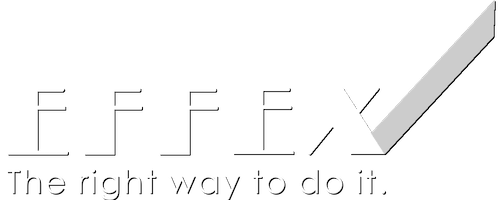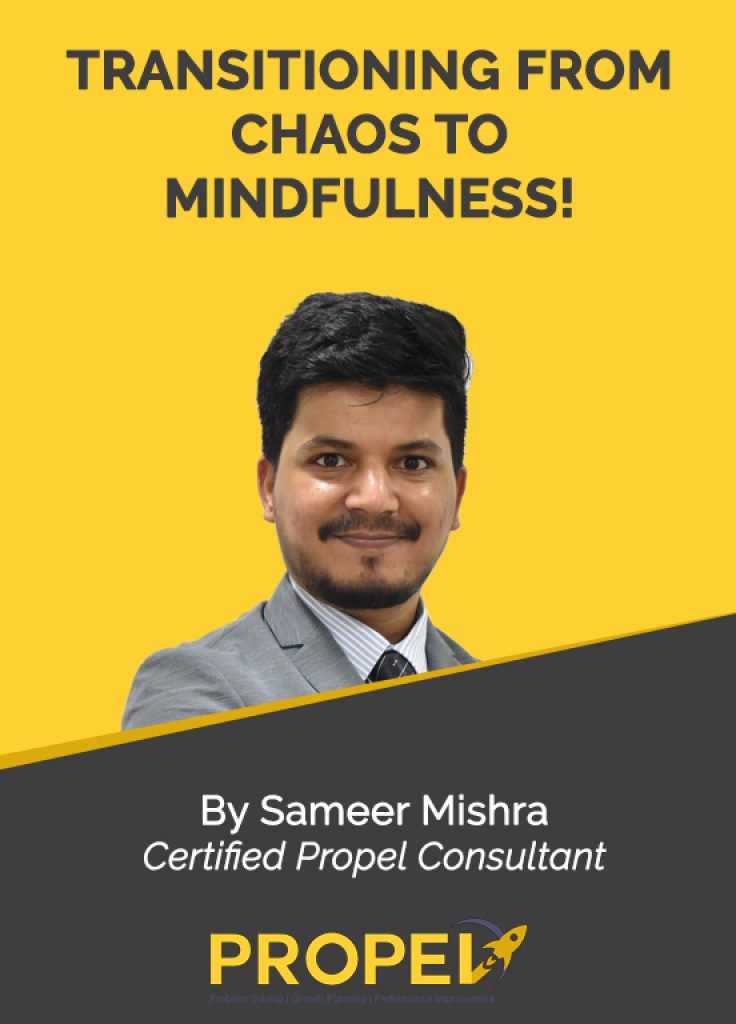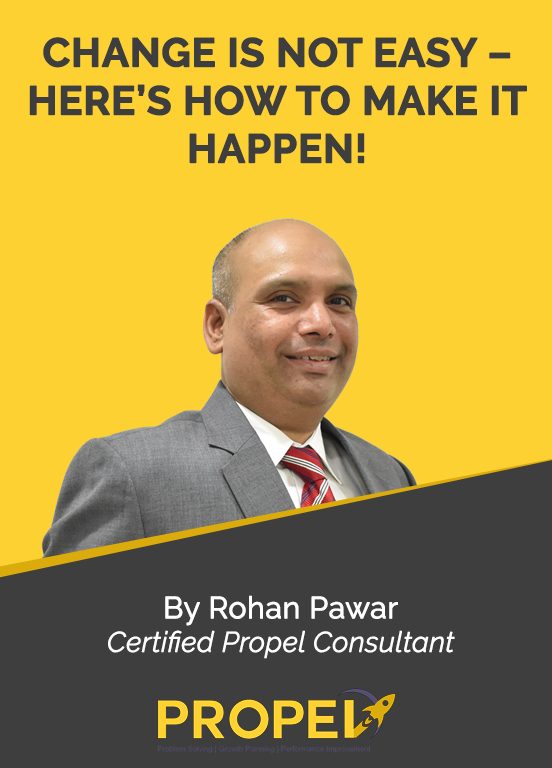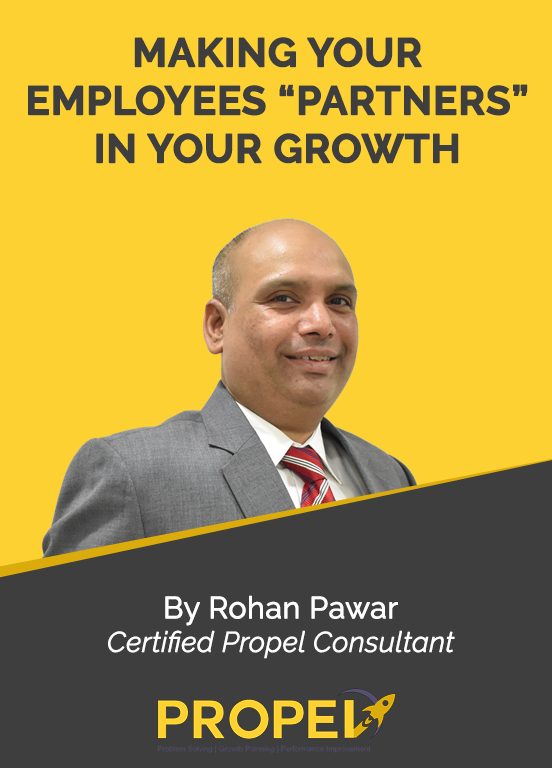Take a moment and conduct a quick pulse check of your organization. What is the climate like – calm, under control? Or chaotic – an environment of total madness?
The truth of the matter is that a lot of us prefer to live in the midst of chaos. In fact, we thrive in it. Perhaps you cannot imagine a day in your personal life without a constant state of stress, or months without on-going change. Perhaps in your professional role, not one week passes without the need to put out a fire or mitigate a building crisis. Many of us have learned to adapt to such turmoil, and even thrive in it. And many of us are proud that we successfully navigate the waters of chaos on a daily basis.
Go back to why you became an entrepreneur in the first place- most likely you would say that you had a vision (unexpressed), a goal (unaccomplished by many around) which you want to fulfil. Others would say, “Business is in my blood…”
If so, what happened to this business with the course of time- time changed, generations that took over came up with novel ideas but the people within remained the same, the processes remained the same, stretching over time. Who bore the brunt of this…the answer as all of you must have said in your minds is ‘the business…the organization’.
There are three main pillars of an organization namely People, Process and Technology. People without processes are like unguarded territories. Absence of technology would mean having the owner’s voice recoded explaining every process whenever there is a new induction, each time, every time. Doesn’t this sound exhausting by itself!!
One such organization had varied issues that stemmed from the smallest human errors to the gravest ones requiring the owners to justify and apologise to the end customers.
Here are some of the issues we spotted when we first began our investigation:
- The company was extremely people dependent- having said that, absence of even a single person in-charge of that particular process would mean an entire organization being on stand-still mode. There were no performance metrics or measurements of any sort to evaluate the efficiency of its people and therefore hold them accountable for their actions- positive or negative.
- Here, things just happened; people managed the orders and its execution the way they did (when they had just started) and if there was an error of some sort, the business owners apologised to their customers- this was a norm (but not analysing the root cause to rectify the problem for good). All this lead to a very inefficient internal operation and consumed excessive amounts of time creating or reinventing an ad-hoc process for each type of client project as they occurred.
- The business grew at a steady pace but with time, competition grew too! Their customers had many similar service providers who would cater to their requirement, additionally, the customers’ demands also grew and so did the operational execution mistakes. So much so that the impact was seen at the Government and compliance levels leading to delirious impact on the client as well as the entire organization.
- There was a huge impact on the overall company reputation.
Our Recommendation:
The best part of an entrepreneur driven organization is that they’re equally enthusiastic about the change process- they’re aware of the price they have paid for mishaps. With the help of the management, we identified appropriate members for each team. This included both supervisory and staff-level personnel. These were people who were intimately involved in all or at least part of the process activities; they were the action takers. (The teams consisted of 5-8 people, with some people on more than one team.)
- First things first, team leaders were assignment for each process. A key point here was that a team leader was the one who is involved in the process and not just oversaw it. This also made him and the team members more accountability.
- We agreed up meeting dates, created individual job role, lived up to every commitment made and eventually designed the process maps. Since this was a new initiative for the people of that organization. We had to ensure that all team members fully understood the purpose and objective of each process and the purpose and responsibilities of the team.
- An underlying objective of our involvement was to make the teams responsible for the implementation and full flow and activity of the process and for its maintenance, after the process was approved.
- To begin the process development and mapping activity, our methodology was to first develop the current “as-is” process, and once mapped, to analyse and evaluate it. To identify deficiencies, redundancies or duplications of activities by different departments, performance gaps and loop-holes, problem areas for communications break-downs with clients and project partners, and internal operations, other error-prone activities, and inefficiencies in general.
- After the as-is process was complete, we started a brief review process to enable each team member to step back and confirm that the process as mapped was indeed the way things actually happened. The technique here was to follow the mapped process in their daily work to find errors, identify critical missing steps and crucial supporting documentation that had been left out, and so on. This did result in some changes to the previously “finished” process map.
- Next came the activity of developing and mapping the “to be” (or “must be”) process. The first step — before beginning any mapping work — was to identify all the process and activity problem areas associated with the real as-is process that needed to be modified or eliminated, and any new activities that needed to be added.
Two very key elements were carefully evaluated for inclusion in the “to be” processes:
- Identification of all customer touch points. These needed to be made more customer-friendly, efficient, and effective; some to be modified and new ones to be added. This was an aspect of the company’s operation that had begun to slip noticeably, and had to be given new life.
- Eliminating all the time and energy-consuming waste in the process, that is, process steps that added no value to the customer or to internal operations. The biggest target here was multiple redundancy of paperwork and document processing within and between departments. The company had become a huge paper factory, largely “just because,” as in, because no one ever looked critically at this operating characteristic before.
The new process for each activity was communicated to respective department personnel and training or familiarization sessions were scheduled for employees who would be tasked with working with the process. While there is a lot that’s in-store for us to do, but like they say, it’s never too late to start!
To you as a reader the above must have seemed like a very time consuming and exhaustive process. I wouldn’t want to deny that, however, as business owners we must also think on the lines of what Jack Welch said, “As organizations’ ability to learn, and translate that learning into action rapidly, is the ultimate competitive advantage”. The advantages of functioning in a mindful, non-chaotic environment suddenly gave surge to improved efficiency amongst teams and employees, there were leaders being born within, accountability increased and the organization developed a positive image amidst its peers.
Keep Propelling!








